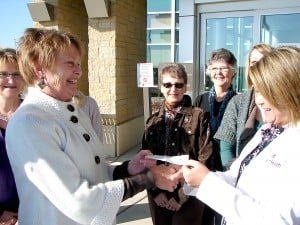Sandee LaMotte

More people may die from undiagnosed lung cancer because they don't qualify for low-dose CT scans, according to a study by Mayo Clinic researchers. The researchers blame current screening guidelines that have remained the same despite the decline in smoking rates in the U.S.
"Our data raise questions about the current recommendations," said Mayo pulmonologist, Dr. David E. Midthun, one of the study authors. "We do not have the best tool to identify who is at risk for lung cancer."
Current U.S. Preventive Services Task Force guidelines recommend annual low-dose CT screening for adults age 55 to 80 who have smoked 30 pack-years (one pack a day for 30 years), and who currently smoke or have stopped smoking within the last 15 years. This criteria is used by doctors and insurance companies to recommend and pay for scans.
According to the researchers, the percentage of lung cancer patients who smoked at least 30 pack-years declined over the study period while the proportion of cancer patients who had quit for more than 15 years rose.
"As smokers quit earlier and stay off cigarettes longer, fewer are eligible for CT screening, which has been proven effective in saving lives," said epidemiologist Dr. Ping Yang in a statement released by the Mayo Clinic Cancer Center. "Patients who do eventually develop lung cancer are diagnosed at a later stage when treatment can no longer result in a cure."
Over the study period the percentage of lung cancer patients who would have been eligible for CT screening under current guidelines fell dramatically: from 56.8% in 1984-1990 to 43.3% in 2005-2011. The proportion of men who would have been eligible decreased from 60% to 49.7%, while the percentage of women dropped from 52.3% to 36.6%.
Researchers worry about the trend. "We don't want to disincentive patients to stop smoking," Midthun told CNN in a phone interview. "When I told one of my patients about the study, his first question was, 'If I stop smoking will I have to stop screening?'"
"We want people to stop smoking, and we don't want them to lie or continue smoking just so they can be screened," added Midthun. "We need better tools to make risk calculations for those who should be screened."
The Mayo study did not take into account other risk factors for lung cancer, such as personal and family history for lung cancer or Chronic Obstructive Pulmonary Disease (COPD) because they are not in the current guidelines for reimbursement. For example, COPD "raises a person's risk for lung cancer by four to six times," said Midthun, yet "only age and pack year history are in the guidelines."
"There's nothing magical in 30-year pack history," added Midthun. He told CNN that age is an equally important factor. "For example, if a person stops smoking at age 55, his risk of lung cancer at age 70 is higher than it was at age 55 when he quit."
The study was published in the February 24, 2015 issue of JAMA, the journal of the American Medical Association. It was funded by the Mayo Clinic and grants from the National Institutes of Health and the National Institute on Aging.
Source: www.cnn.com




 OWATONNA — A new program is now in place at Owatonna Hospital to help people who have been victims of sexual assault.
OWATONNA — A new program is now in place at Owatonna Hospital to help people who have been victims of sexual assault.